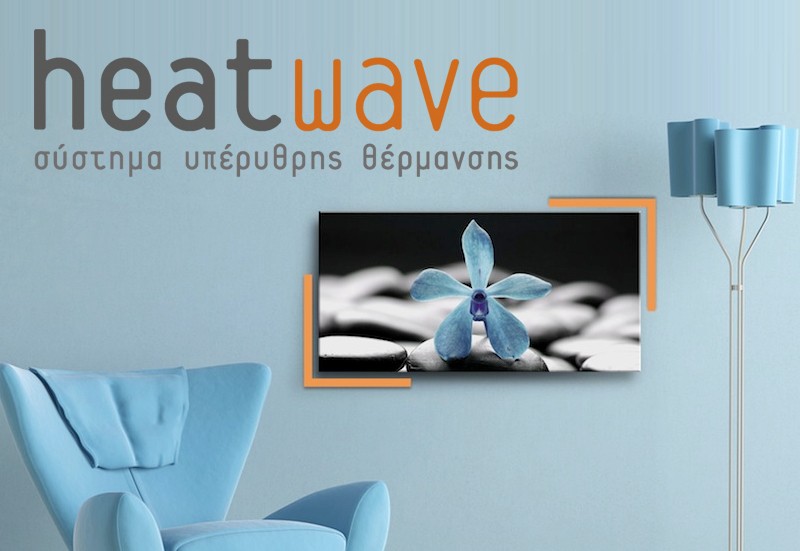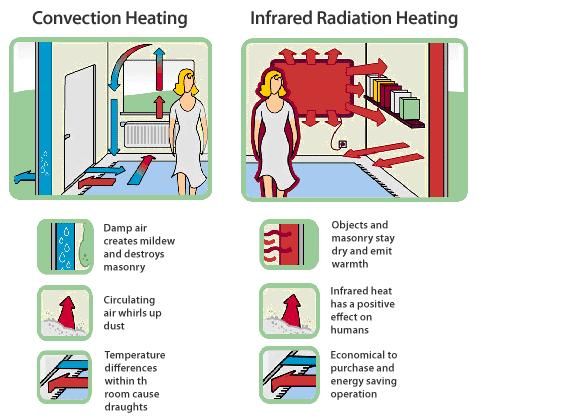Infrared heating powered by Redwell

INFRARED WAVES
Infrared heat waves can be felt, but not smelt or seen. This is implied by the name: The prefix "infra" from Latin, means "below", or "beyond". So we are talking about electromagnetic waves, which are “below-red” in the visible light spectrum. The Infrared band covers a range of wavelengths between 780 and one million nanometres (1 millimetre). The human eye can not perceive these wavelengths. To help explain this, a single human hair is about 70,000 nanometres thick. Infrared waves are therefore invisible to us but we know that they are there because we can feel it on our skin.
Our elements mainly emit low-impact, long-wave infrared-C waves, which penetrate and warm solids.
THE DIFFERENCE IS IN THE AIR.
Unlike conventional heaters which just heat the air, Redwell heats the walls. The walls store heat much longer than the air and release it slowly back into the room. Thus, the walls remain dry and mould has no chance to spread. Another advantage is that the air does not circulate so less dust is picked up.
Working principle
The fundamental principle is that with infrared, solids are heated and not air.
The disadvantages of a conventional heating
Moisture in the air condenses on the cold walls, resulting in mould and damp walls
- Constant air movement circulates dust
- Temperature differences cause drafts
The warming of air has various negative effects. Firstly, air circulation in the room, where warm air rises and cold air sinks. This results in large temperature differences, which we perceive, for example by a cold floor. Secondly, the rotating air picks up dust and particles, which we then breathe into our lungs.
From a physiological viewpoint cold air is considered much healthier than warm air - just think of a relaxing winter walk! Another key factor is that air in a building needs to be changed frequently through ventilation – when the heat is held in the air this is a lot of energy out the window. Another problem occurs when warm air condenses on the cold wall, since it can develop mould, which also has an impact on our health.
The advantages of Redwell Infrared Heating
We are physically heating the fabric of the room and the human body directly which are capable of buffering this energy and storing it much longer. This results in big energy savings. Once the room has reached the desired temperature, the heater will turn off until it is needed to replenish the store.
From the presentation by Prof. Dr.-Ing. Habil Claus Meier.
- Objects and walls remain dry and give off heat
- Infrared heat has a positive effect on people
- Economical to purchase and saves energy during operation
As infrared heats through radiation and not convection, there is no air movement, thus preventing dust circulation. It follows that the air temperature is cooler than the wall temperature. As already mentioned, the air is cooler, dust-free and therefore much healthier.
Even remarkable is, that Redwell certified this year (2011) from the Aristotle University of Thessaloniki, as a top for the economy, efficiency, thermal comfort and quality and manufacturing excellence. The findings are recorded in a multipage book, derived from experiments and studies for 2 years over the infrared technology of REDWELL. So we are very pleased to inform you, for a product which is unique in it's class, certified by an official university worldwide. See more here


